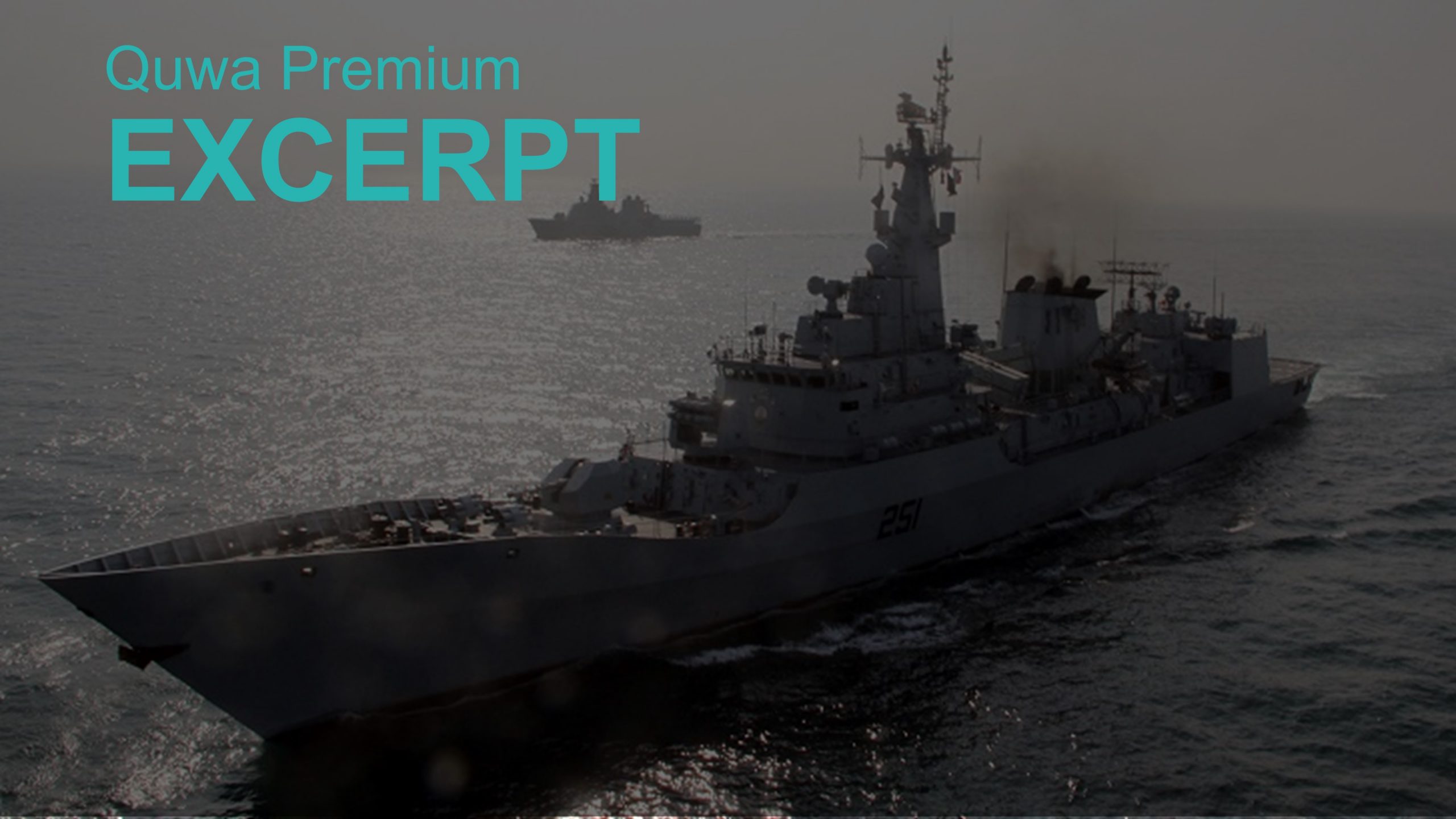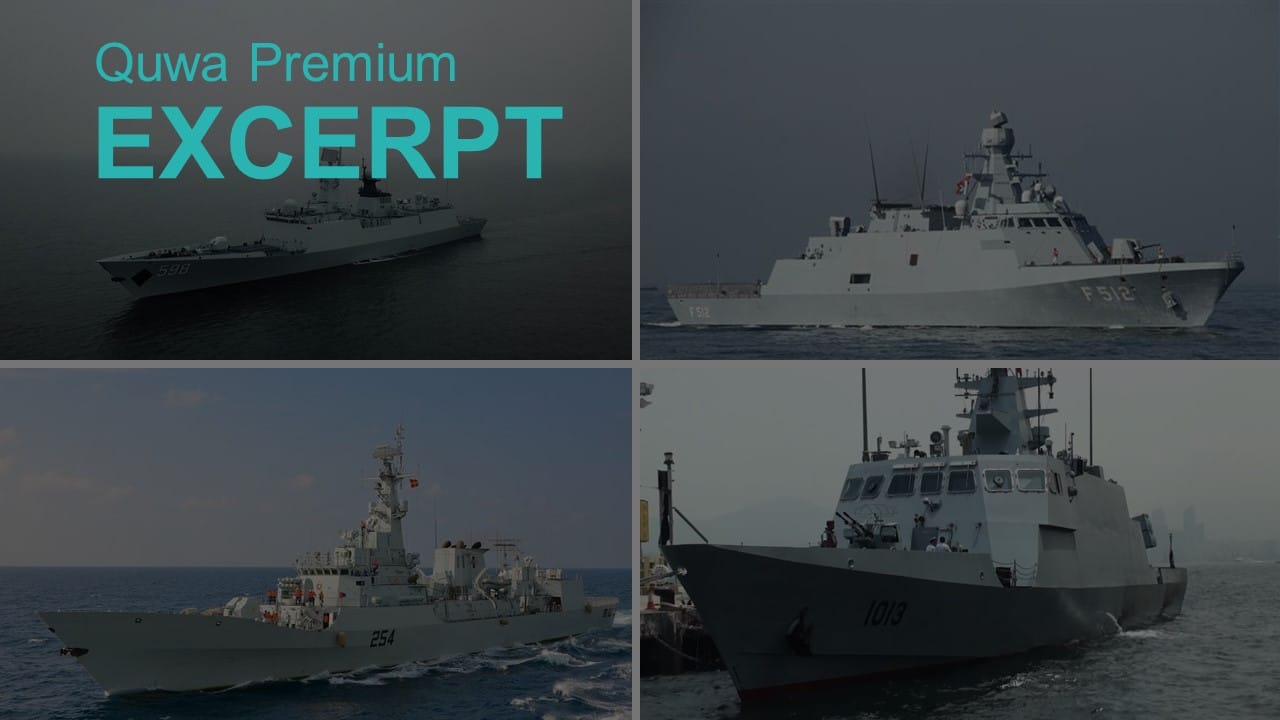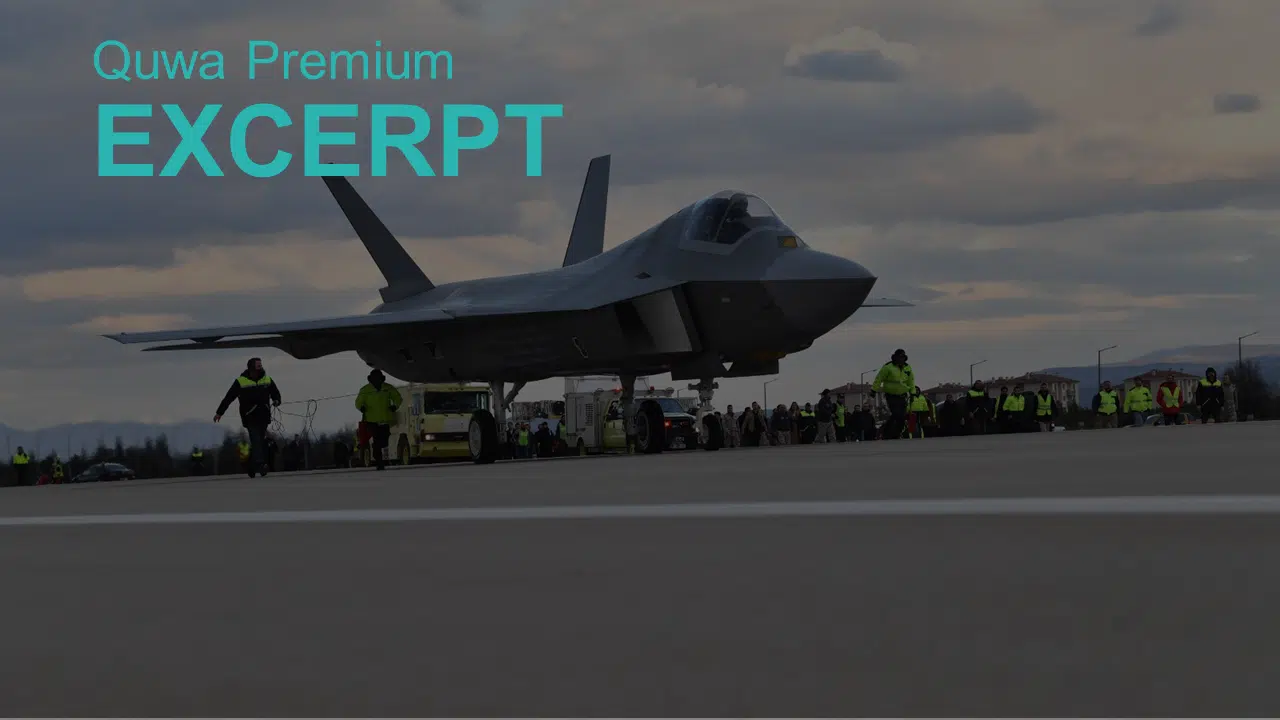2421Views

How Pakistan Should Equip its Ships for Naval Air Threats
Author Profile: Usman Ansari is a journalist specializing in defence issues and presently based in Pakistan. He is Pakistan Correspondent for the US media group Defense News, and Chief Analyst for the British naval news monthly Warships – International Fleet Review. He has a BA in International History and International Politics, and MA in Global Security, both from Keele University, UK.
By Usman Ansari
The Pakistan Navy (PN) operates in a dense missile and electronic warfare (EW) threat environment, but ongoing obsolescence issues limit the effectiveness of its frontline warships in performing their primary territorial defence role.
The main shortcomings of Pakistani warships are their ineffective defences against aerial threats, especially the current generation of stealthy sub-sonic and supersonic anti-ship missiles. Presently, these missiles may overwhelm Pakistani warship defences if fired in salvo.
Pakistani frigates are presently equipped with six or eight round surface-to-air missile (SAM) launchers. These launchers have no reloads, and though potentially capable against single inbound threats, these SAMs are dependent on launcher orientation. This in itself supposes the ship will not first need to manoeuvre to allow the launcher to be brought to bear, which would reduce the engagement and reaction time against an incoming target that may arrive before this can be achieved.
Present close-in-weapon-system (CIWS) types – of which there are three different systems in service with a fourth to follow – are also limited in the coverage they provide due to their physical position. Like most such systems, they may also need more than one burst to bring down a threat, and in general, the end-user should view them as the final line of defence against a single threat penetrating all other defences.
Alongside the development of advanced combat management systems (CMS) – such as the Aegis –
Western reactions to advanced (including supersonic) missile threats led to the development of a spate of new SAMs. These include, among others, the RIM-162 Evolved Sea Sparrow (ESSM), RIM-116 Rolling Airframe Missile (RAM) Point Defence Missile System (PDMS), Aster missile family, Sea Ceptor, plus improvements to existing CIWS such as the Phalanx Block-1B, and new guided and/or programmable ammunition.
For financial and geopolitical reasons, Pakistan has only been able to upgrade its CIWS platforms and replace legacy soft kill systems with more modern equivalents.
While this is inadequate in terms of ship defence, the PN partially mitigated the deficit by extending the range of its anti-ship capabilities. In terms of the latter, the Harbah and Zarb anti-ship cruising missiles (ASCM) will play a leading role in the PN’s long-range anti-ship capabilities.
Proliferation of land attack cruise missiles (LACM) coupled with India’s growing carrier strike capabilities dictated the need to extend the range at which the PN can deter enemy warships from closing towards and threatening its shores. This has been achieved to some degree with the Harbah and Zarb, both of which appear to leverage heavyweight warheads in conjunction with long engagement ranges.
Likewise, the procurement of new warships was limited due to fiscal constraints. However, the looming obsolescence of the existing fleet has evidently pushed Pakistan to invest in new systems.
The various new-build 2,000+ ton warships – i.e., the four Type 054A/P, four MILGEM, two OPV 1900s – and probable upgrades to the F-22P will transform the PN surface fleet.
To operate in South Asia’s dense missile threat environment, these warships will need rapid-reaction, vertical-launch system (VLS)-based SAMs. This configuration will allow for omni-directional coverages.
The LY-80N (the naval variant of the Army’s land-based system), will equip the Type-054A/P. It is a very capable, but bulky and heavy missile[1] in relation to the performance it offers.
As a semi-active radar homing (SARM) SAM, the LY-80 also depends on four prominent MR-90 Fire Control Radars (FCR) to illuminate targets. These are also visible on depictions of the Type-054A/P, meaning it is limited to simultaneously intercepting perhaps up to eight targets at a time, potentially restricting its ability to deal with a determined saturation attack.[2]
Newer missile types deliver a comparable or superior capability by primarily using active radar guidance, which reduce the size and weight of these missiles. In turn, onboard VLS suites can carry more of these compact missiles, especially through quad-pack configurations (i.e., wherein one VLS cell can carry four SAMs, which can allow a 16-cell system to carry 64 SAMs).
End of Excerpt (649/1,404 words)
You can read the complete article by logging in (click here) or subscribing to Quwa Premium (click here).
Get the Latest News and Insights on the Pakistan Navy:
- Moving Forward With the MILGEM-J Corvette/Frigate
- Pakistan Navy Chief Outlines Aviation Modernization Plans
- Pakistan Navy Seeks Platform for Long-Range Anti-Submarine Warfare Aircraft
[1] Profile. HQ-16 Medium-Range Air Defence Missile System. Military Today. URL: http://www.military-today.com/missiles/hq16.htm
[2] Henri Kenhmann. “LY-80N: the naval VLS system dedicated to export.” East Pendulum. 27 November 2016. URL: http://www.eastpendulum.com/ly-80n-systeme-vls-naval-export


